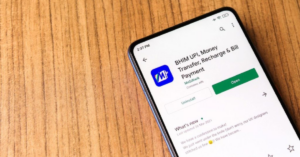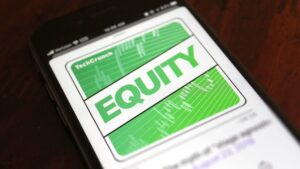The Kimberley Process is a certification scheme established in 2003 by a United Nations resolution, following a series of reports which first exposed the link between the diamond trade and the financing of conflict. Though the process claims to have solved the problem of conflict diamonds, it systematically ignores human rights abuses, worker exploitation, and environmental degradation. Furthermore, the Kimberley Process does not require diamonds to be traced to their mine of origin, allowing smuggled diamonds to obtain“conflict free” certification and enter world markets.
Jewellers that offer “conflict free” diamonds are limiting themselves to the Kimberley Process’s definition, which narrowly defines conflict diamonds as diamonds that finance rebel movements against recognised governments. However, the definition leaves out a large number of diamonds that are tainted by violence, human rights abuses, poverty, environmental degradation, and other issues.
Understanding the market
The global diamond market size is estimated at USD 87.31 billion and forecasted to grow at a CAGR of 3.0 percent. This forecast is due to increasing demand from emerging economies in Asia Pacific such as India and China. According to a survey conducted by Bain & Company in 2020, diamonds continue to be a gift in high demand especially for special occasions like weddings.
The study further found that many consumers are willing to spend at least as much on diamonds post-pandemic. The challenge lies in the record of ownership. For many objects of value in the world, there is a record of ownership. Vehicles are tracked by the Department of Motor Vehicles and home owners have the Property Registry office tracking provenance. However, in the case of diamonds, details of the manufacturer, retailer or purchaser are not captured cohesively. A global registry could assure consumers that the diamond they’ve purchased is ethically sourced as well as provide the origin and historical movement of the diamond.
Overcoming hurdles with a trusted solution
What the diamond industry needs is a trusted, cloud-based, global system of record for precious stones such as diamonds to prove origin and ownership from the mine to the finger; A solution that not only addressed manufacturers and wholesalers but also the rest of the value chain including retailers and consumers. This ensures that the value of the diamond, its provenance etc, is clear to all parties involved.
Every diamond is certified by Gemological Institute of America (GIA), the world’s foremost authority in independent third-party diamond certification, that certifies the diamond on the 4C (cut, colour, clarity and carat). All GIA graded diamonds have a unique serial number laser inscribed on the diamond which enables one to match the diamond to its certification.
Both the certificate and the unique serial number are then assigned a unique ID and stored on the Blockchain. Thanks to this process, there is a one-to-one correlation between the object (diamond) and the Blockchain entry.
An authorised retailer who inspects the diamond along with the GIA certification, matches it to the unique serial number inscribed by laser on the diamond, along with personal identity (first owner) and inputs all the data on the Blockchain for a fee. When the diamond changes hands, the subsequent ownership is also captured on the Blockchain, thus establishing ownership history.
The origin also is traced to establish if the diamond is a virgin diamond or a Blood/Conflict diamond. When the diamond changes hands from the manufacturer, distributor, retailer, and to the first owner, complete provenance is established. The KYC and AML are also a part of the process to maintain both the diamond and its owner(s) are flawless.
In order to maintain the ownership history impeccably, the diamond is tokenised (NFT). In case of a sale, the NFT moves from the seller’s wallet to the buyer’s wallet, simultaneously with the physical asset’s (the diamond) transfer of possession.
The objective is to help create and maintain value for precious stones through a unique set of tools and technologies, engendering trust, providing traceability, and promoting transparency.
This state-of-the-art platform helps the gemstone industry share data, which in turn helps businesses deliver superior customer value by providing customers with insights on their diamond’s origin, quality, and history.
The benefits:
Ownership
By registering a diamond, the system ensures there is an immutable record of who the owner of a diamond is.
Provenance
The origin of a precious stone is essential in understanding it has been sustainably produced and its quality guaranteed.
Authenticity
Assuring the value of the precious stones through integration with GIA certificates and laser inscription.
Traceability
The life of a precious stone is captured to give insights on its journey.
Tokenisation
We issue an NFT token for each diamond. When ownership changes, the new owner will have the NFT token. The holding of the NFT is a proxy for ownership.
Business Outcome:
Consumers:
Consumers benefit in two ways. With the Virgin Diamond, they have the assurance of owning a first-hand diamond. With the help of the unique ID and blockchain record, they benefit from having a unique identifier for their diamond stored in an immutable ledger – a single source of truth.
Retailer:
With these extra records on hand, participating retailers become more attractive to consumers, providing a detailed history of production, ownership, and provenance of their gemstones to potential customers. They can also assist new customers to register their diamonds on the blockchain and enjoy an additional benefit of receiving a percentage of the fee collected from a consumer when a diamond is registered on the blockchain.
Manufacturers:
Manufacturers can increase the value of their diamond(s) by marking them as a VirginDiamond (similar to ForeverMark™). Additionally, they receive a percentage of the fee collected when a diamond is registered on the blockchain.
Advantage of the Global Registry
If a diamond gets stolen, it could be flagged within the registry making insurance claims easier. A retailer/organisation buying a diamond can track ownership to understand if they are buying a legitimately acquired gem or a stolen one.
Lending: The owner can borrow money from the lender (individual/manufacturer) by pledging the NFTs. The fact that the ownership is captured in a global registry along with its provenance makes it easy to set the loan: asset value along with the period of the loan etc, for the lenders thus cutting short the process of disbursal.
This entire ecosystem is developed by NetObjex Inc, a startup headquartered in Southern California for their partners GemIdentity. NetObjex’s Digital Asset as-a-Service (DAaaS) platform enables enterprises to manage digital assets by unlocking liquidity, detecting counterfeit goods, enabling monetisation through storefronts and marketplaces, parameterising legal contracts, and tracking/tracing/monitoring through digital twins.
NetObjex’s Digital Asset platform forms the core backbone for GemIdentity and today the platform currently holds diamonds worth USD 6 billion.
MetaVerse – The new way to buy diamonds
NetObjex is currently working on building a storefront in our office premises in the Decentraland where visitors can shop for diamonds, and those will be shipped to the customers location. We are connecting the digital and the physical world, offering a unique shopping experience for the customers.
Cohort 9 of NetApp Excellerator
Our journey with NetApp Excellerator has been phenomenal. Through the program, we got more than what we expected right from messaging, media exposure, networking and we were looked upon like one of the emerging technology companies. This has given us the confidence to continue walking on our path and strive to work harder.
NetApp Excellerator’s Demo Day is scheduled to take place on January 20, 2021. Don’t miss it. Click here to register.
To participate in NetApp Excellerator’s Cohort 10, click here.










